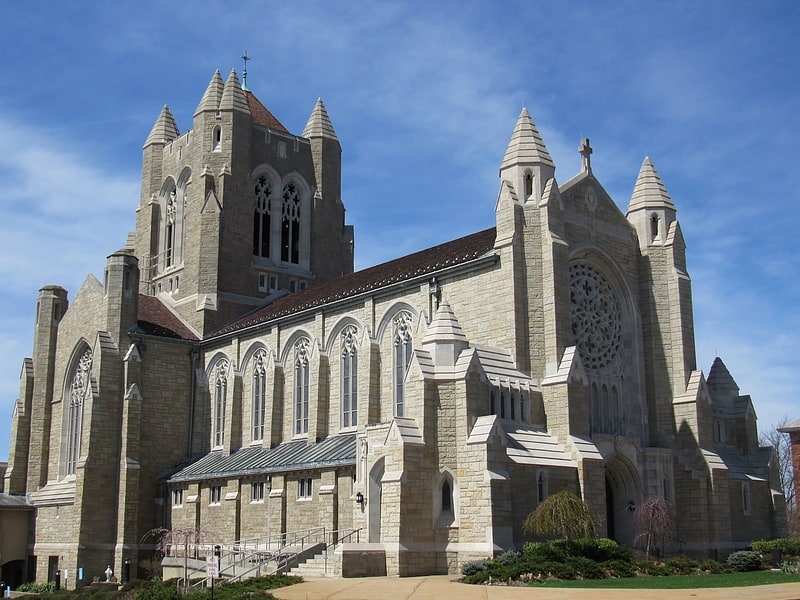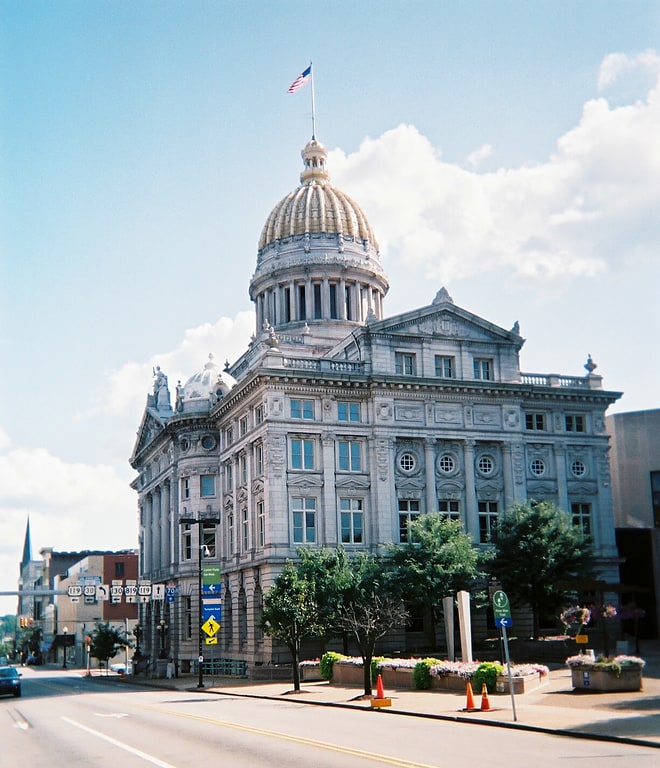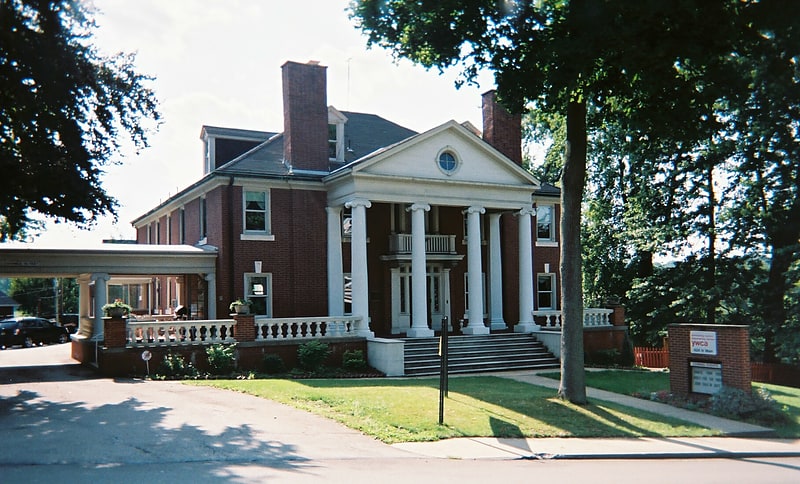Discover 6 hidden attractions, cool sights, and unusual things to do in Greensburg (United States). Don't miss out on these must-see attractions: Westmoreland Museum of American Art, Blessed Sacrament Cathedral, and Westmoreland County Courthouse. Also, be sure to include The Greensburg Hempfield Area Library in your itinerary.
Below, you can find the list of the most amazing places you should visit in Greensburg (Pennsylvania).
Table of Contents
Westmoreland Museum of American Art

Museum in Greensburg, Pennsylvania. The Westmoreland Museum of American Art is an art museum in Greensburg, Pennsylvania devoted to American art, with a particular concentration on the art of southwestern Pennsylvania.
Art lover Mary Marchand Woods bequeathed her entire estate to establish The Woods Marchand Foundation in 1949. The museum developed from this foundation, opening ten years later.
William H. Gerdts wrote that
.. in western Pennsylvania the Westmoreland Museum of Art in Greensburg, rather than the Carnegie Institute in Pittsburgh, has pioneered regional investigations.
A Tim Prentice kinetic sculpture is installed in the south facade.[1]
Address: 221 N Main St, 15601 Greensburg
Blessed Sacrament Cathedral

Catholic church in Greensburg, Pennsylvania. Blessed Sacrament Cathedral is the mother church of the Roman Catholic Diocese of Greensburg in Greensburg, Pennsylvania. In 1999 it was included as a contributing property in the Academy Hill Historic District.[2]
Westmoreland County Courthouse

Building in Greensburg, Pennsylvania. The Westmoreland County Courthouse is a government building of Westmoreland County located in the county seat, Greensburg, Pennsylvania. It is a contributing property to the Downtown Greensburg Historic District, but was listed separately on the National Register of Historic Places on March 30, 1978. The courthouse is also one of the tallest structures in Greensburg, standing 175 feet above street level.[3]
The Greensburg Hempfield Area Library

Library
Address: 237 S Pennsylvania Ave, Greensburg
Academy Hill Historic District

The Academy Hill Historic District of Greensburg, Pennsylvania, is bounded approximately by Baughman Street, North Maple Avenue, Kenneth Street, Culbertson Avenue, Beacon Street, and North Main Street. It consists of 252 structures on 63.5 acres, with the most notable buildings from the years 1880 to 1949. The earliest building, a former farmhouse at 333 Walnut Avenue, dates from 1840. The Academy Hill Historic District is directly to the north of the Greensburg Downtown Historic District.
The southern portion of Academy Hill is largely institutional in character, including the Blessed Sacrament Cathedral, its parish school, and Greensburg's public high school, now used as a middle school. Since 1810 the block bounded by Main Street, Academy Hill Place, Maple Avenue, and Grant Street has been used for a succession of public schools, and the 1810 school at this site was the source of the neighborhood's name.
Main Street, north of these landmark structures, is lined with large houses and mansions built for the city's elite, some of them designed by Paul Bartholomew. As one moves to the east from Main Street, the houses become less elaborate. The north-south streets east of Maple Avenue are lined with relatively modest houses that represent middle-class and working-class residential architecture in the pre-World War II era.[4]
Greensburg Downtown Historic District

The Greensburg Downtown Historic District of Greensburg, Pennsylvania, is bounded approximately by Tunnel Street, Main Street, Third Street, and Harrison Avenue. It consists of 62 buildings on 21.8 acres, with the most notable buildings from the years 1872-1930. The district's oldest structure is the former Masonic Temple at 132 South Main Street. The Academy Hill Historic District is directly to the north of downtown Greensburg.
Two places which are separately listed on the National Register, the Westmoreland County Courthouse and the Greensburg Railroad Station, are included in the district. The "dominant building" in the district is the courthouse.
Downtown Greensburg was once a significant retailing center, serving numerous small communities in central Westmoreland County. Not only was it an important station on the Pennsylvania Railroad, but it was also the headquarters of West Penn Railways, an interurban (long-distance trolley) company serving many small communities to the east and south of Greensburg. The headquarters building of West Penn Railways is still extant at 416 South Main Street, serving as City Hall, although it is outside the boundaries of the historic district. These forms of rail transportation contributed to Greensburg's growth in the pre-automobile era.
Greensburg's largest department store was Troutman's (202-226 South Main Street), the only downtown building to have escalators. Other department stores included Royer's (114 South Main Street), Sears (101 North Main Street), and J. C. Penney (221 South Main Street, in a building previously used by Pollins' Grand Depot department store). All four structures remain standing, converted to other uses. The opening of Greengate Mall in 1965 (now demolished) had a devastating impact on downtown retailing, following the pattern that occurred in numerous communities. However, the presence of the courthouse continues to give purpose to downtown, and a significant number of historic properties remain.[5]